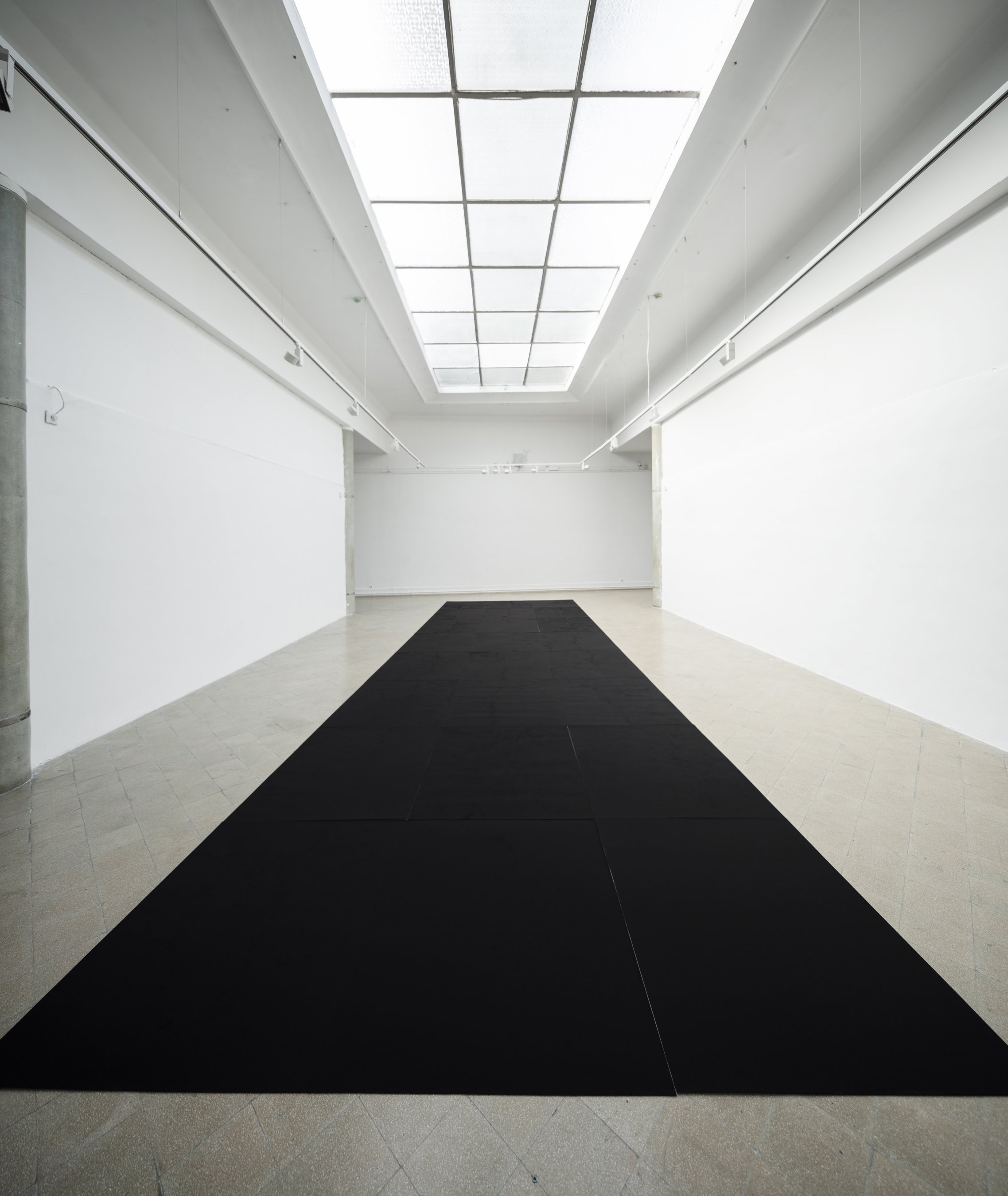Gazing Into Darkness
2023
Szent István Király Museum, Székesfehérvár, Hungary
The Szent István Király Museum is pleased to present its next exhibit, opening on September 22, 2023, at 7 pm, which is Gábor Koós' solo show titled Gazing Into Darkness, and also the debut of Koós' new series. The exhibit will be presented by art historian Kinga Bódi and is on view between September 22 and December 10.
The site-specific installation was inspired by the essay "In Praise of Shadows" by Japanese author Junichiro Tanizaki. Due to its characteristic skylights, the Országlászló tér exhibition space of Szent István Király Museum is an extremely bright space, and this, according to the thoughts expressed in Tanizaki's essay, makes it very western. Light enters the space through 24 windows located on the ceiling these 24 windows play a central role in the installation. To offset the brightness of the space, Koós places a surface facing the light, i.e., the windows, which can absorb the largest possible amount of light. A radical gesture that suggests how the aura of an entire space can change.
"I draw these 24 windows with a pen on soft paper. The marks from the pen on the paper allow me to make prints from the drawings. After printing. I overpaint the drawn windows with the darkest paint that one is able to obtain and use for making art; Musou black, which is a Japanese paint. With this gesture, to balance the brightness of the space. I face the source of light with a surface capable of absorbing the greatest possible amount of light. I use the prints to do the same experiment that I do with the space itself, only in a painting. I overpaint the white parts of the image with the same dark paint with a tiny brush, dot by dot, to erase the light in it. With this gesture, I give the black paint that I have been using for printing in the past 15 years a different quality; it becomes greyish, almost glossy silver. In the exhibition space, in addition to the drawings painted in black, which absorb almost all light, the black-and-white and blackened versions of the prints can also be seen on the walls.
After the Japanese custom of blackening one's teeth, I call these blackened prints ohaguro paintings. One of the main reasons for doing ohaguro is the fact that for hundreds of years, pitch black objects were regarded as immensely pretty. It is only natural that people wanted to get closer to what they deemed as beautiful, just like the process of having one's teeth bleached to appear whiter is completely normal in modern days.
I believe that facing darkness and shadows is inevitable, and by letting them in and being with them without wanting to overcome them with light, tames them and allows us to become friends. I can see the beauty in the dark room, in the darkest of shadows that then also give new quality to something that I thought would be the darkest possible.















































